‘Exponential pleasure, zero hassle’ is what ep0h stands for. This impressive French skiff is designed for easy, fun sailing with stabilisers to help avoid capsize and promote confidence in skiff sailing
This is a skiff with big ambition: ep0h stands for ‘exponential pleasure, zero hassle’. The goal was to create a skiff that anyone can sail even if they are not an expert, and Yannick D’Armancourt, the young French naval architect who designed and built this machine, has created something impressive. It provides easy, fun skiff sailing without having to go swimming.
D’Armancourt grew up sailing dinghies and loved the old 470 that still sits in the family holiday home in north Brittany. Then he had a go at the ageless 5O5. While studying naval architecture in Nantes he was able to sail different kinds of skiff. He loved skiffs, but wondered how he could he share the experience of exhilarating downwind sailing with his father and sisters.

Right away he came up with the idea of creating a central hull and adding two floats. Think of a bicycle with two stabilisers attached to the rear wheel. D’Armancourt started to build a prototype, but at this stage it was quite a long way from what is now the ep0h, which went on show for the first time in January at the Düsseldorf boat show.
D’Armancourt didn’t want to design a trimaran. “There is nothing like steering a monohull,” he says. The problem was gaining sufficient buoyancy from the two floats without adding too much weight. The aim is to rely on the stability of the floats if there is a sudden gust – or the crew make a mistake – but not to sail with the floats in the water.
Sailing on ‘skis’
So he played around with the position of the floats, moving them fore and aft, from touching the water surface to sitting high over it. In the end, the hardest part was finding the right shape. Now D’Armancourt doesn’t speak of floats, but uses the word ‘ski’ to define these outriggers.
They are rather strange skis, but on the water, I have to admit that the comparison fits. There is a vertical part, very narrow, that slices through the water like a knife. But, more importantly for stability, is the horizontal part, which is flat like the sole of a ski, but wider.
So when the float hits a wave, first the vertical part cuts through it and then the water hits the flat part, creating a vertical lift. The faster the boat sails, the more powerful the lift.
“The general concept is speed, thrills and additional stability brought about by the stabilisers, which make handling easier,” says D’Armancourt. “They improve the boat’s stability by [a factor of] three or four, reducing capsize risk by 80 per cent compared to a classic skiff.
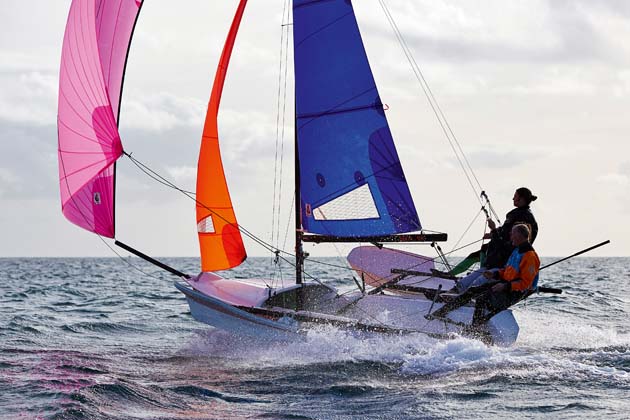
“The deck layout is very simple thanks to the self-tacking jib and with the mainsheet just in hand, so you can take beginners on board in 15-20 knots of wind in complete confidence.”
On the water the concept really works. Clever alloy tubes weighing only 15kg in total create wings that enable the crew to do some very efficient hiking before attaching to the trapeze. First you can hike and only when you feel at ease stand up and go out on the wire. Because the ep0h is so beamy, it is impressively powerful.
The cost of the boat, which is built in France, is €18,650 (£14,450), which is around €2,000 (£1,550) more than an RS800.
Dimensions
LOA (main hull) 6.75m/22ft 2in
Max beam 3.30m/10ft 7in
Sail area 22.0m2/236ft2
Displacement 130kg/286lb
Crew number 2
More info: Yannick D’Armancourt/Frédéric Neumann, contact@epoh.eu +33 6 71 03 56 42.
DETAILS

The float on the port side. D’Armancourt has removed the starboard float. This is easy because it is held by one large screw that can be loosened without tools
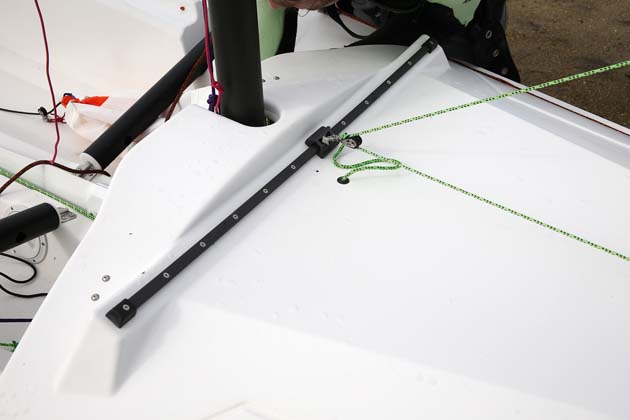
The self-tacking jib can easily be adjusted if you want to sheet it in for sailing upwind. The sheet comes back to the cockpit under the deck
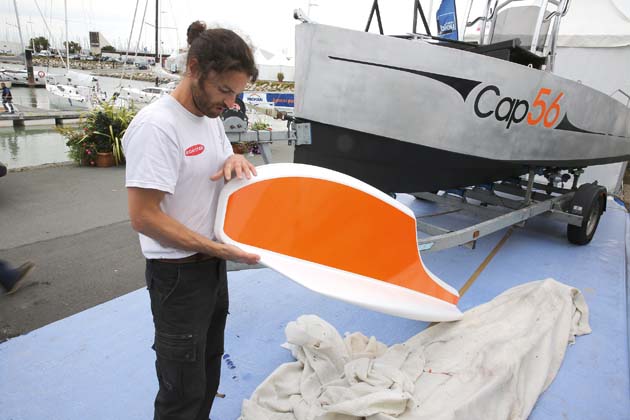
Yannick D’Armancourt holds the port float in his hands: it weighs only 8kg and has a volume of 80lt
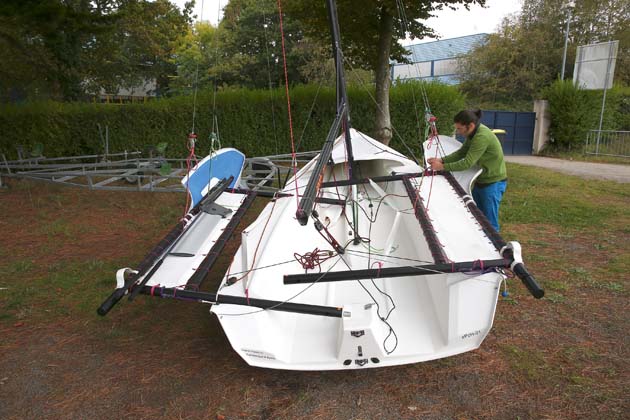
For parking the boat, the wings are slid across the hull. This also just takes a few seconds
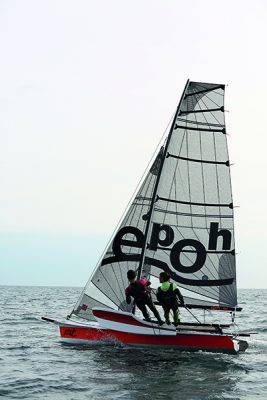
The mainsail has a square head and the leech is slightly inverted to minimise turbulence at the top of the sail
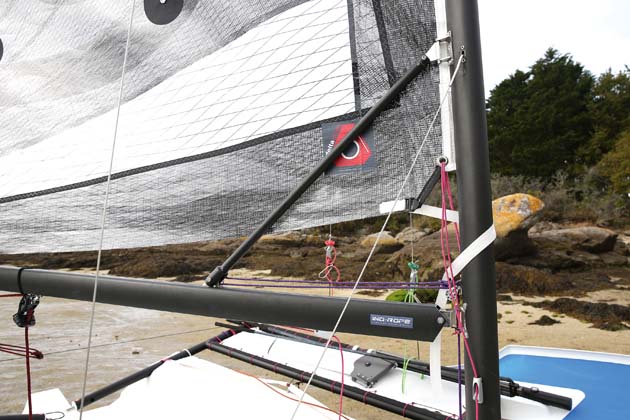
The vang is on top of the boom to free up space in the cockpit and make it easier for crew during tacks
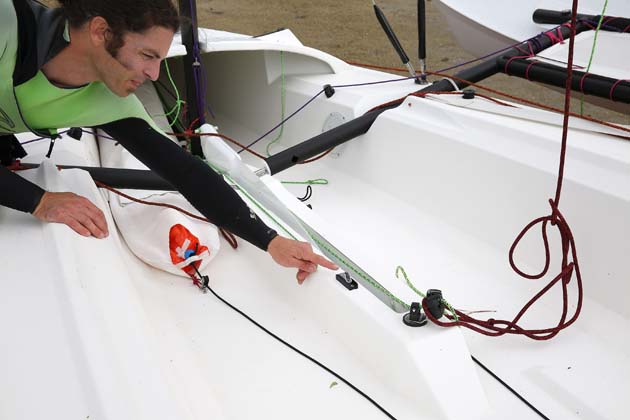
D’Armancourt points out the cleat that holds the pivoting centreboard down when sailing. If the board hits the ground, the cleat releases the control line
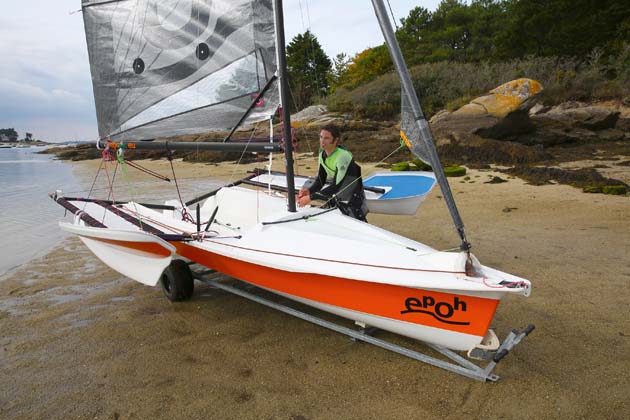
The bow and hatch for the gennaker is a fine piece of work, with a moulding for the bowsprit. A snuffer is set under the forestay so it is easily dowsed
Loïc Madeline is the editor of the French sailing magazine Voiles et Voiliers. As an ex-windsurfing instructor and long-time owner of a J/24, he loves small dayboats and dinghies, but more often tests larger cruising yacht than flying skiffs




